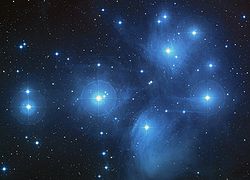Viewing Constellations In The Northern Sky
 CASSIOPEIA
CASSIOPEIA
Cassiopeia, “the queen”, is easy to see with the naked eye. It is has the shape of a W. It’s sort of a slanted W. Try to find it, viewing the northeastern sky. Everybody knows where the Big Dipper is, which is slightly northwest. Cassiopeia is to the right of the Big Dipper, in the northeastern sky.
Cassiopeia is a conspicuous constellation that is found in the northeastern sky. I was quite delighted to discover Cassiopeia. It does require a little patience.
Now, after you have found Cassiopeia, try to visualize a row or string of stars descending below Cassiopeia. I noticed it very quickly. And after searching through a few charts, I perceived this to be the constellation Perseus.
PERSEUS
Perseus, “the hero”, is a man in the stars. What I personally observed was a string of stars descending towards the east. I noticed the two stars on the end, which is a foot of the man. This was obvious.
NightWatch: A Practical Guide to Viewing the Universe – Absolutely essential before you purchase your first telescope! This is the beginner’s guide to astronomy.
PLEIADES
And at the end of the foot (Perseus), I noticed a magnificent cluster of stars. To be perfectly honest, I didn’t have a clue as to what these stars were. There appeared to six, or seven stars, it is difficult to see with the naked eye. These are the “Seven Sisters”. This happens to be the emblem for the Subaru car.
Pleiades is in the constellation Taurus. Pleiades is a prominent sight in the winter in the Northern Hemisphere, and in the summer in the Southern Hemisphere. Pleiades is very popular in many cultures.
Here is a marvelous sky chart that illustrates Cassiopeia, Perseus, and Pleiades. I found this to be very useful. Courtesy of Sky And Telescope.
Orion SkyQuest XT4.5 Classic Dobsonian Telescope - Sky & Telescope magazine recommends Orion telescopes. This is, quite simply, one of the best telescopes for kids and adults! A must have.
2 Responses
Telescopes For Beginners
May 2nd, 2010 at 12:15 am
1Nothing better than getting what you want from a post, kudos to you for this.
Roger
July 30th, 2010 at 3:15 am
2Thanks for the kind comment! Was just outside viewing Perseus. Noticed Pleiades at the foot of Perseus.
RSS feed for comments on this post · TrackBack URI
Leave a reply
Subscribe to Feed
Subscribe Now!
Featured Deal ➸
Social Button ➸
Categories
Archives
SQUIDBOARD
Academic Tech
Multimedia MegloMania
Tech Toolbox
Meta
Navigate the Night Sky like Galileo ➸
Popular Squids ➸
2. HDMI To RCA Composite Enables Users To Stream With Old TVs ... On The Squid ► If you’re wanting to stream content with a device such as Apple TV for example, but you do not have a flat screen TV, there’s a gadget that you might be interested in. The HDMI to RCA composite enables users to stream with the old style television. Yes, Apple fans can watch Apple TV with that old TV. Chromecast is another viable choice.
3. Roku Purple Light Keeps Blinking ... On The Squid ► The Roku set top box updates itself often. Not long after a reset I noticed one of the Roku boxes was doing something rather odd. The purple light continued to blink and it wouldn’t stop. The Roku unit worked great, but the purple light kept blinking. The light should not be blinking all of the time.
4. The NooElec Dongle Is Too Much Fun! ... On The Squid ► For around $20, the NooElec Dongle is way too much fun! It’s not for everybody, but for the tech that doesn’t mind spending a little time with it, the benefits pay off.
5. The Big Zapper: All Band Doublet ... On The Squid ► Uses 96 feet quarter wave, or per leg. Copper wire (solid) preferred is AWG #14 or #12. Width is 192 feet total.
6. How To Program Baofeng UV5R ... On The Squid ► New out of the box—one must learn to program your Baofeng UV-5R radio. This guide is useful especially for newbies. I’m mostly interested in programming simplex type applications, along with local emergency frequencies.
7. Cheaper Wire For Ham Antenna Projects ... On The Squid ► Especially for listening to the lower bands in this crazy unpredictable solar cycle, I’m accustomed to building my own antennas. Thicker copper wire is usually the standard, but over the years I’ve learned that thinner gauge wire will hold out sufficiently. It’s all in the packaging. Here are a few scattered ideas.
8. Live Police Scanner Feeds On Your Computer ... On The Squid ► Want to listen to live streaming radio transmissions of police, fire, and EMS in your area? Do you own a computer with internet access? If so, you now have a police scanner. Listen to live audio online in the United States.
9. Kenwood 590 EQ Settings ... On The Squid ► The Kenwood TS-590S EQ settings will give the user optimum TX audio if properly configured. This transceiver is hard to beat for the money. Some will use the default mode, while others take the benefit of the ARCP-590 software. Follow this and you will have sparkle and articulation.
10. The Guide to Setting Up Google Chromecast ... On The Squid ► Setting up Chromecast is a simple process for the most part, and the reward is worth it. Just follow along with my guide and you’ll get your Chromecast going. If you have trouble with setup you can leave a comment and I will do what I can to help.
Poll ➸